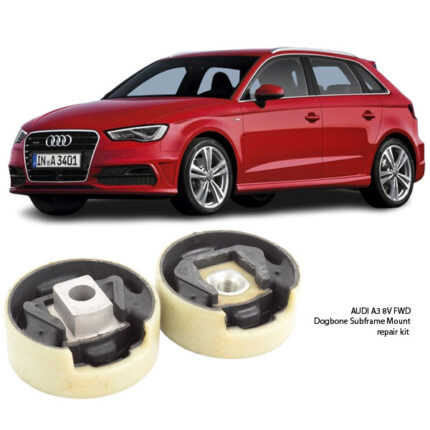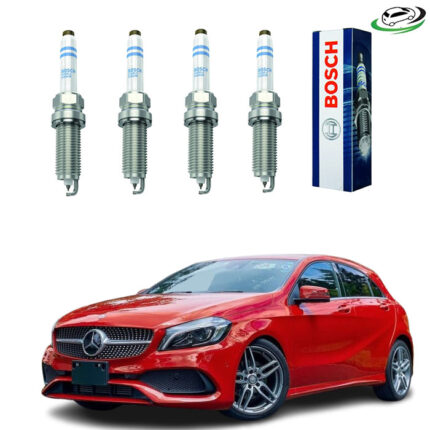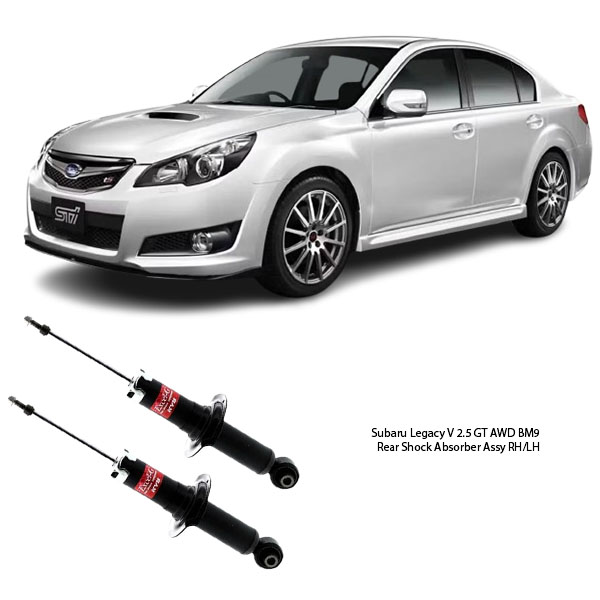-7%
Get Subaru Legacy V 2.5 GT AWD BM9 Rear Shock Absorber Assy RH/LH 340042 in Kenya
The rear shock absorber assembly is a crucial component of a vehicle’s suspension system, responsible for ensuring stability, ride comfort, and road handling. The RH (Right-Hand) and LH (Left-Hand) shock absorbers work together to absorb shocks from the road surface, preventing excessive bouncing and maintaining proper tire contact with the road.
In this comprehensive guide, we will explore the functions, benefits, types, signs of failure, and maintenance of rear shock absorbers to help you understand their importance and ensure optimal vehicle performance.
What is a Rear Shock Absorber Assembly?
A rear shock absorber assembly consists of a shock absorber (damper), coil spring (if applicable), mounting bushings, and brackets. It is designed to control the motion of the rear suspension and prevent excessive movement caused by road irregularities.
Each vehicle has a pair of rear shock absorbers (RH and LH), which work in tandem to stabilize the rear axle and improve ride quality. These shock absorbers are specifically designed for different vehicle models, ensuring proper fit and function.
Functions of Rear Shock Absorbers
1. Dampening Vibrations and Bumps
Shock absorbers reduce the impact of potholes, speed bumps, and rough roads, preventing the vehicle from bouncing uncontrollably. They ensure that the suspension compresses and rebounds smoothly, providing a stable and comfortable ride.
2. Enhancing Vehicle Stability
By controlling suspension movement, rear shock absorbers help prevent body roll, sway, and excessive weight transfer when braking or cornering. This is crucial for maintaining control and handling at high speeds or during sudden maneuvers.
3. Improving Tire Contact with the Road
Properly functioning shock absorbers ensure that the tires maintain constant contact with the road surface. This improves traction, braking efficiency, and steering precision, reducing the risk of skidding or loss of control.
4. Reducing Suspension Wear and Tear
Shock absorbers minimize the strain on other suspension components such as springs, control arms, and bushings, prolonging their lifespan and reducing maintenance costs.
5. Enhancing Passenger Comfort
A well-maintained suspension system ensures a smoother and quieter ride, minimizing vibrations and jolts felt inside the cabin. This is especially important for long-distance driving and off-road conditions.
Types of Rear Shock Absorbers
1. Hydraulic Shock Absorbers
These use hydraulic fluid to dampen movement. When the suspension moves, fluid passes through internal valves, controlling the motion and absorbing shocks. Hydraulic shocks are widely used in passenger cars and light-duty vehicles.
2. Gas-Filled Shock Absorbers
Gas shock absorbers contain nitrogen gas and hydraulic fluid, which prevents foaming and ensures consistent performance, especially in high-speed driving and off-road conditions. They offer better damping force and durability.
3. Coilover Shock Absorbers
Coilovers combine a shock absorber with a coil spring, providing adjustable ride height and stiffness. These are commonly found in sports cars and performance vehicles.
4. Twin-Tube Shock Absorbers
These have two cylinders (inner and outer) for hydraulic fluid movement, offering smooth operation and affordability. They are commonly used in regular passenger vehicles.
5. Mono-Tube Shock Absorbers
A single-cylinder design provides better heat dissipation and damping response, making them ideal for high-performance and off-road vehicles.
Signs of a Failing Rear Shock Absorber
1. Excessive Bouncing
If your vehicle continues to bounce after hitting a bump, the shock absorbers may be worn out.
2. Poor Handling and Stability
Difficulty in controlling the car during turns or braking indicates weakened shock absorbers.
3. Uneven Tire Wear
Worn shocks cause tires to lose contact with the road, leading to uneven tread wear.
4. Leaking Fluid
Oil leakage around the shock absorber body suggests internal seal failure, reducing damping effectiveness.
5. Nose Diving or Rear Squatting
If the front of the vehicle dips excessively during braking or the rear squats during acceleration, the shocks may be worn.
6. Knocking or Clunking Noises
Worn-out bushings or damaged shock absorbers can cause strange noises when driving over rough surfaces.
Benefits of Replacing Worn Rear Shock Absorbers
✅ Improved Ride Comfort – Smooths out road imperfections for a comfortable experience.
✅ Better Vehicle Control – Enhances steering response and braking efficiency.
✅ Increased Safety – Reduces the risk of skidding and loss of control.
✅ Extended Tire Lifespan – Prevents irregular tire wear, saving you money.
✅ Protects Other Suspension Parts – Reduces strain on springs, control arms, and bushings.
Maintenance Tips for Rear Shock Absorbers
1. Regular Inspection
Check for leaks, rust, or physical damage on the shock absorbers during routine maintenance.
2. Test for Bounce
Press down on the rear of the vehicle and release. If it bounces more than once or twice, the shocks may be worn out.
3. Replace in Pairs
Always replace both RH and LH rear shock absorbers together to maintain balanced performance.
4. Follow Manufacturer Recommendations
Refer to your vehicle’s owner’s manual for shock absorber replacement intervals. Most shocks last 50,000 to 100,000 km, depending on driving conditions.
5. Check Suspension Components
Inspect bushings, mounts, and springs when replacing shocks to ensure a fully functional suspension system.
6. Avoid Overloading
Carrying excessive weight can wear out shock absorbers faster. Follow the recommended load capacity of your vehicle.
7. Use Quality Shock Absorbers
Invest in OEM or high-quality aftermarket shock absorbers for durability and reliable performance.
Conclusion
Rear shock absorbers are essential for vehicle stability, ride comfort, and safety. Whether you drive on city roads, highways, or off-road terrains, well-maintained shock absorbers ensure a smooth, controlled, and safe driving experience.
Follow us on Facebook for more parts.




Reviews
Clear filtersThere are no reviews yet.